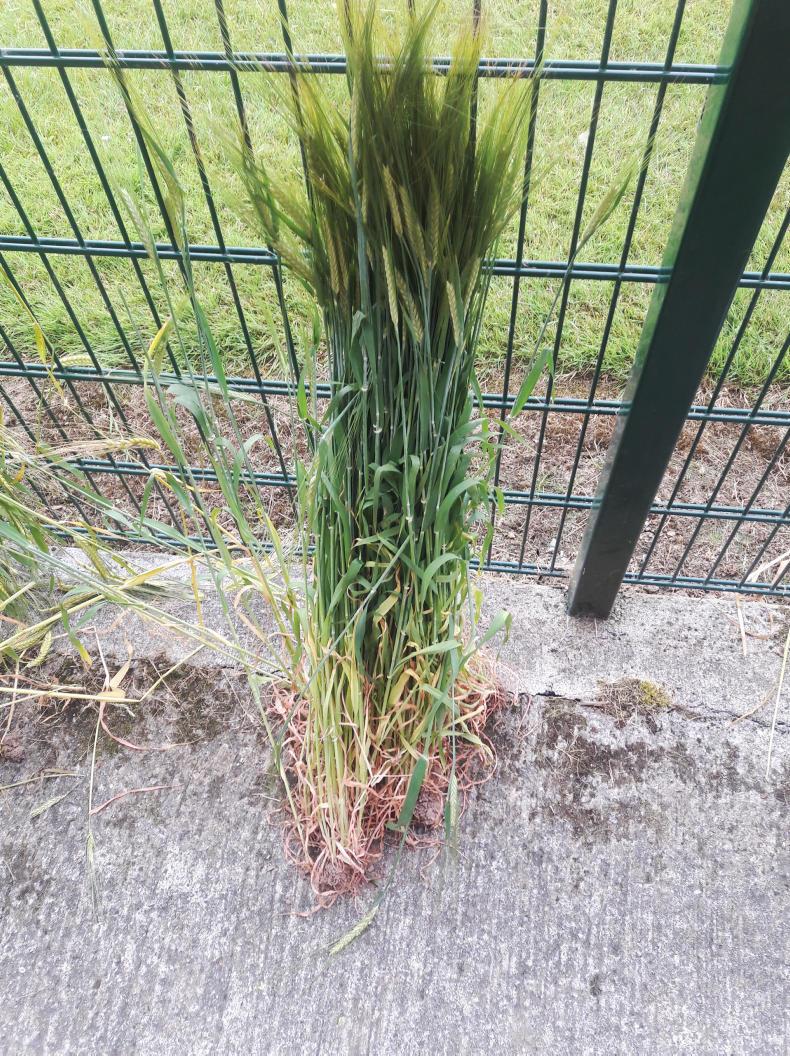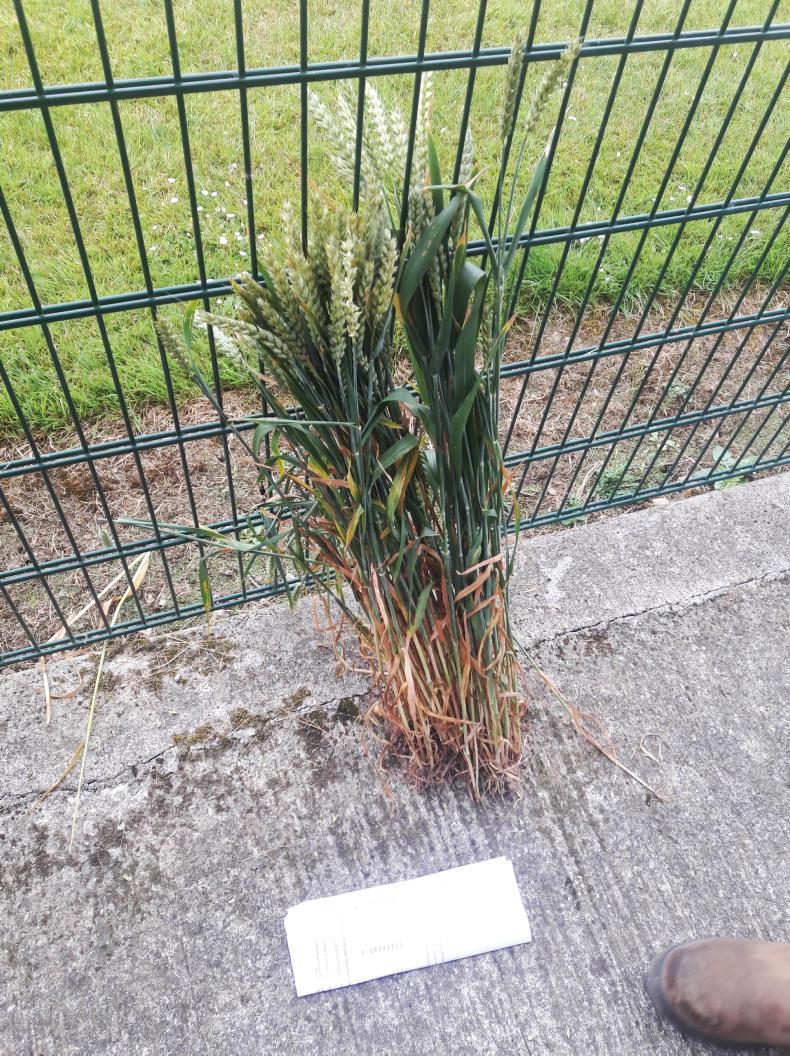Here are the main things to consider when deciding to use or buy whole crop for winter feed:
Assessing a crop
Walk the field you intend on buying – quality is varying this year with spring crops. You must be sure of what you’re purchasing. Try and get a relatively good estimate of what you will have from the crop.
Assess the crops with a tillage farmer if possible. Speaking at a drought management event in Cork, Teagasc adviser Michael McCarthy explained a quick method to determine the grain quantity in a crop.
Make a 112cm diameter hoop made from wire or alkaline.
The area of the hoop is one-tenth of a square metre.
When walking a field, place the hoop over the crop in two or three places. Count the number of stems inside the hoop.
Following this, take several grain heads and count the number of grains per ear. By multiplying the average number of stems (eg 80) by the average number of grains per ear (eg 20), you can get the grains within the surface area of the hoop.
Multiply this by 10 to get the grains per square metre.
If a crop is below 12,000 grains per metre, it may not be worth your while, said Michael. 20X80X10 is 16,000 grains per square metre.


Harvesting
When it comes to grain texture, Michael said grain must be past the milky stage and have a slight texture to it for whole crop wheat or barley. For ensiling, grain texture must be balanced with moisture content in the greenery of the crop. A decent moisture level in the vegetation of the crop is needed for fermentation. The priority in the feed is the grain as that is of most value. Usually whole crop is harvested three to four weeks before normal harvest time. Urea treated WC is usually two to three weeks before normal harvest.
Look for uniformity in crops. When putting whole crop into a pit it is important to have an even standard of crop throughout the pit. A uniform crop will ferment and keep better in a pit.
When harvesting, set the blade relative to what you want in your pit. More or less straw/grain ratio etc. This decision will vary depending on the quality of the crop.
Crimping is an option for unevenly ripened crops or crops too far gone for whole crop harvest. Anyone who does usually crimp must be wary of the temperature of the grain this year. The majority of farmers will be looking for bulk, so crimping won’t be applicable.
Keeping the whole crop silage fresh is a challenge compared with silage. Putting silage on top of whole crop in the pit can keep the crop well. This is not always possible so spreading salt on the outsides of the pit or using a transparent polythene cling sheet can help to minimise waste. Additives are available to help prevent mould at feed out also.
Be aware if a lot of farmers decide to pursue the idea of ensiling whole crop there will be even less straw available. Alternative bedding has been sourced by farmers around the country.
Peat moss and wood chip are options that some farmers use in a normal year.
If farmers are looking for access to whole crop they must be prepared to pay above the odds for the value of the grain and straw. Estimated price for whole crop winter wheat was placed around the €1000/acre mark, with spring barley expected to be upwards of €600 per acre.
It may be worthwhile to consider taking the headlands and perimeters off winter wheat and spring barley crops.
Headlands and perimeters tend to be lower yielding – it may be an option to extend out pit silage for farmers in a difficult spot.
Catch crops grown on contract from farmers who harvested early winter barley is another option. Examples are forage rape, maize or RVPs.






 This is a subscriber-only article
This is a subscriber-only article









SHARING OPTIONS: